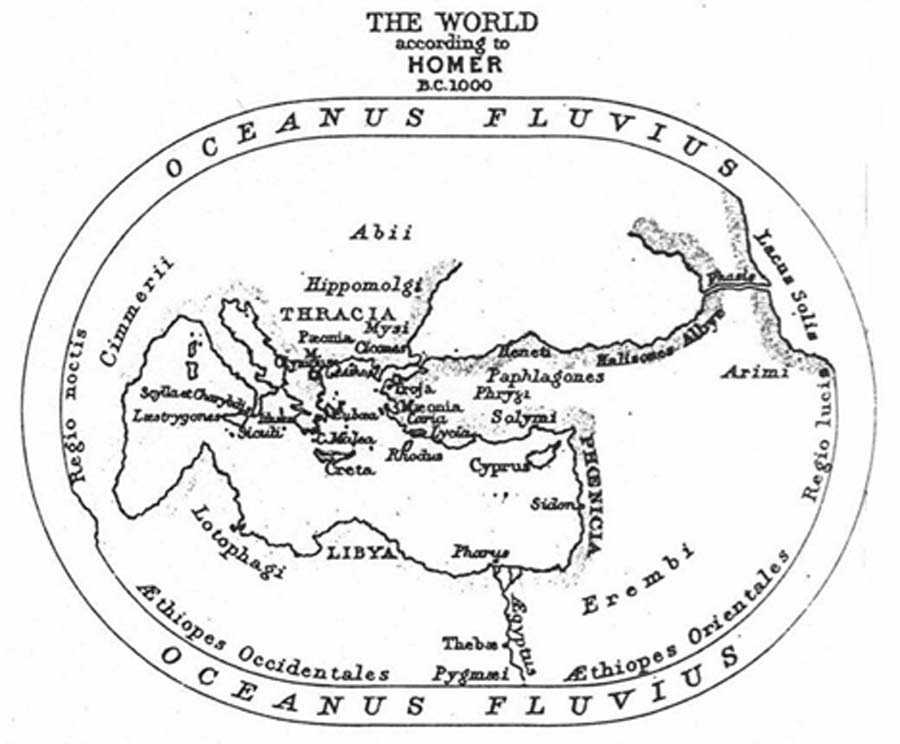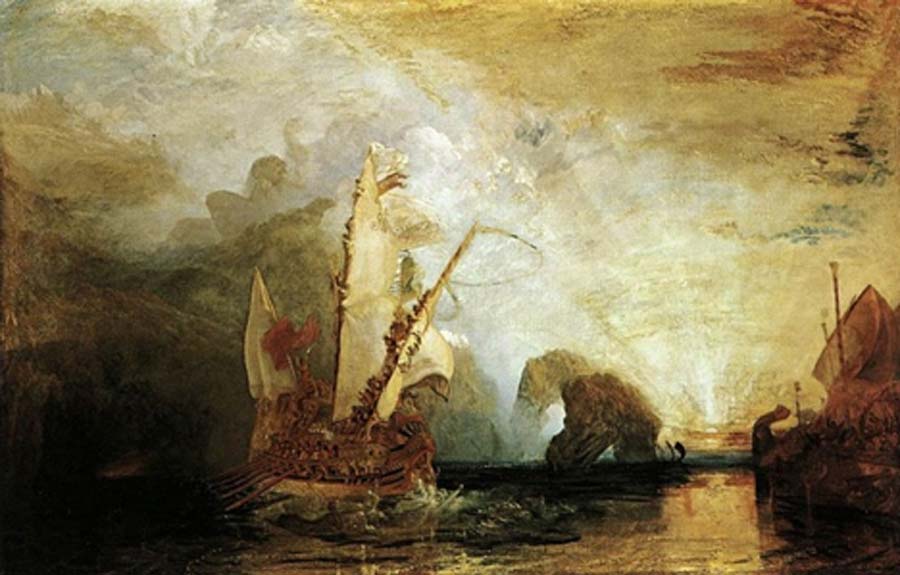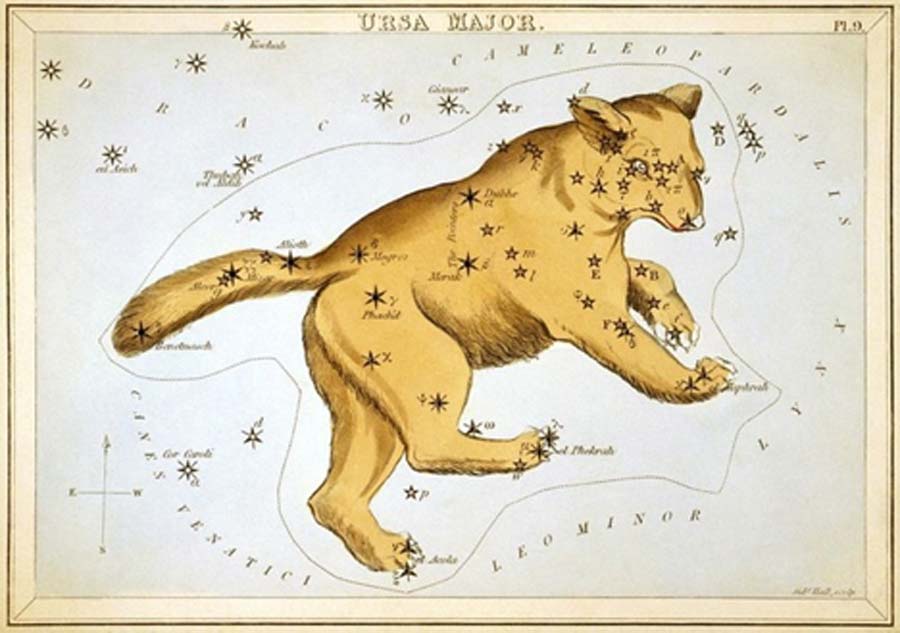
The Itinerary of Odysseus, an Ancient Treasure Map
Did Homer’s Odyssey contain a secret code, that would guide the Greeks to gain complete control over the Black Sea and the North Atlantic and access to the riches of precious metals and other treasures? Was the Odyssey not only a heroic poem, but actually intended as a coded secret ancient treasure map? Dr Roberto Volterri takes on the challenge of the odyssey of discovery as suggested by the author Gilbert Pillot in his (1972) The Secret Code Of The Odyssey; Did The Greeks Sail The Atlantic? Only those who had committed to their memory the detailed descriptions of the routes followed by the Greek hero Odysseus and, at the same time, had possessed the 'secret code of deciphering' would be able to retrace the same routes, to find the same places visited by Odysseus and to take possession of the wealth (metals or other natural resources) of which those places abounded.

Homer's conception of the world during the Heroic era. From The Challenger Reports (1895) (Public Domain)
The theory proposes that Homer, through the mouth of Odysseus, wanted to indicate - stage by stage of the long and perilous journey - a whole series of complementary facts, which could act as a guide to the initiated successors of the Achaeans (Greeks who fought in the Trojan War) to reveal to them the secret to deciphering the code, which could have lead them to the locations of treasures. Could these treasures not only be tangible, but also perhaps explain the ‘Greek miracle’ of the sudden development of the arts, sciences and general knowledge explosion of the Greeks by the fifth century? To decipher with some accuracy the real routes followed by Odysseus, perhaps one of the 'keys’ is to consider the direction of the winds that propelled Odysseus’ ship during its long voyage.

Odysseus Deriding Polyphemus by Joseph Mallord William Turner (1829) Web Gallery of Art (Public Domain)
The Winds
In summary the events described in Homer’s Odyssey refer chronologically to the years immediately following the conquering of the city of Troy by the Achaeans (Greeks), around the end of the 13th and the beginning of the 12th century BC. At that time sailing could only make use of the classic stern wind, since the so-called 'Latin sail', which allowed sailing even against the wind, was introduced much later. So, when Homer narrates that Odysseus' ship - equipped with a square sail useful only with the wind coming from the stern of the boat - was propelled by the wind of Boreas, the name by which the Greeks called the wind coming from the north, one has to conclude that the ship was definitely heading south.
To follow Odysseus’ classical itinerary, he leaves the country of the Cicones - north of the Aegean (modern-day Turkey) - to head towards Cape Malea, on the south coast of Greece. Similarly, when Homer describes Odysseus’ ship propelled by the wind, Zephyr, one concludes that the route is eastwards, while when it is propelled by the Euro, it is westwards, and so on.

Ursa Major, plate 9 in Urania's Mirror, a set of celestial cards accompanied by ‘A familiar treatise on astronomy’ by Jehoshaphat Aspin (1825) (Public Domain)




